Recreation of tabriz
In this article we read some about recreation of Tabriz the city that located in north-west of Iran. read about that in www.iranisfahantour.com
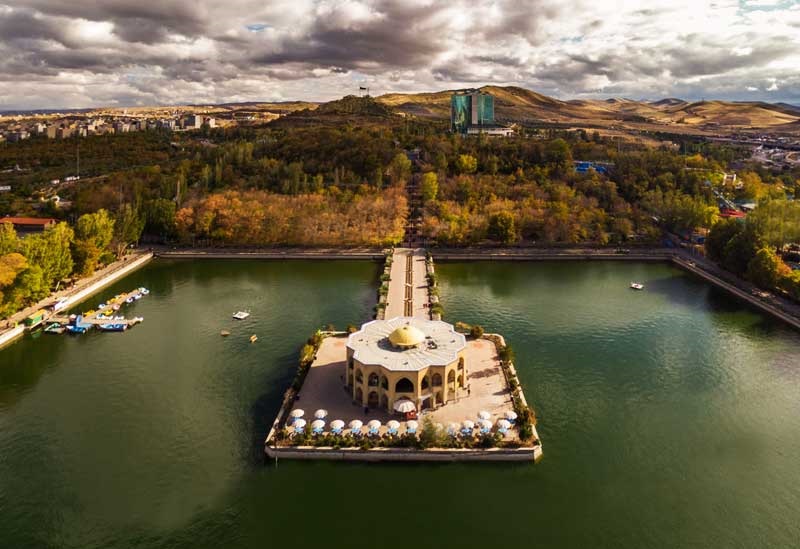
El Gölü also known as Shah Gölü is the name of a large historic park containing an artificial lake in south east of Tabriz, Iran. Shah Gulu’s artificial lake is a rectangular lake surrounded by four sidewalks and a stripe of flowers in its four sides. In the middle of lake a building representing the traditional architecture of Tabriz is located. The building in the center of the lake is connected to the northern side walk of the lake. In South of the lake there is a hill covered by trees. Two stairways connect the sidewalks to the top of the hill. At top of the hill there is a building with modern architecture. There is also a funfair next to the park.
The early history of the El-Gölü is not clear. However, it seems that the lake originally was used as a water resource for agricultural purposes. During Qajar dynasty when Tabriz used to be the residence of crown prince of Iran, there was an artificial island with a small palace in the middle of the lake which was used as royal summer palace for royal family. During 2nd Pahlavi’s the palace was reconstructed and a pass-way was built to connect the island to the northern sidewalk of the lake
The lake and the palace in the center was originally named as Shah Gölü. After the revolution on 1979 when the monarchy toppled the park and the surrounding renamed as El Gölü, lake of the people.
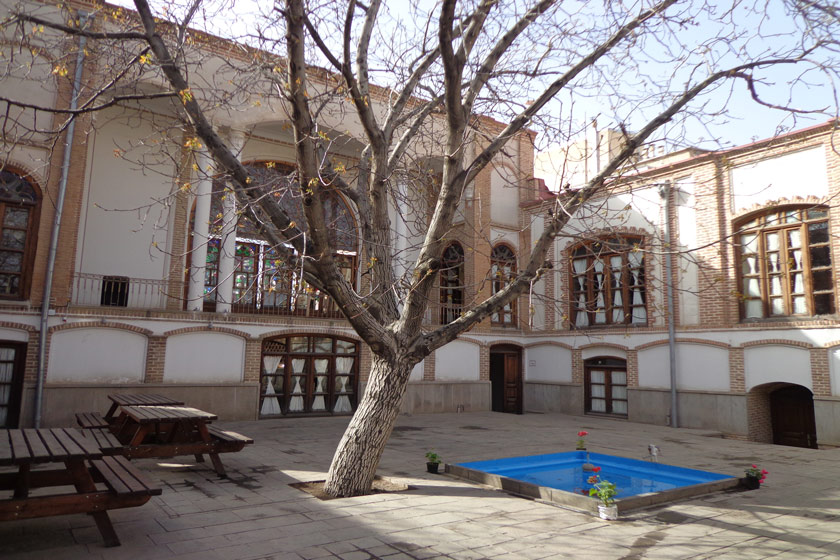
Haidarzadeh’s house is a historical mansion situated in Maghsoudieh suburb of Tabriz, Iran, on the south side of Tabriz Municipality building. There is no document showing the date of construction of this historical house, but studies revealed that the house constructed about 1870 by Haji Habib Lake. The house was registered in the list of National Remains of the Country in 1999 under the number 2524. It covers an area of 900 square meters and has two floors. The house has two interior and exterior yards which are separated by house.
In the basement, there is a Howz-Khaneh (a large room with a small pool with a fountain in the middle) ornamented with colorful bricks and vault. Other parts of the house are connected together through a hall. The building was ornamented with wooden-worked windows, stuccoes, colorful glasses, brick works and paintings. The main room is one of the most attractive rooms of the house.
Haidarzadeh house was restored in 2001, and is currently used as Tourism Information Center of East Azerbaijan province and Tabriz.
There are a few historical houses next to the Haidar Zadeh’s house such as Salmasi, Behnam House, Ganja-i Zadeh and Ghadaki House.
The Blue mosque of Tabriz was built upon the order of Jahan Shah, the ruler of the Kara Koyunlu. His domain covered major parts of modern Iran, Azerbaijan, and Turkey. Jahan Shah’s wife, Khatun Jan (died 1469), established the endowment (vaqf) for the mosque’s construction. However, just a few years later, Jahan Shah and his Kara Koyunlu were toppled by Uzun Hassan of the Ak Koyunlu, and Tabriz was taken. Jahan Shah’s daughter, Saleha Khatun, was allowed to oversee the rest of the construction work by the new rulers. During the reign of Yaqub bin Uzun Hasan, “the cupola of the mosque’s mausoleum as well as its main parts were completed”. Sandra Aube adds: “A few details from the mausoleum’s interior, such as alabaster pieces from the wall panels and the main prayer niche (meḥrāb), reveal that the mausoleum was never completely finished.
Though the mausoleum was never completed, when the Safavids assumed control over Tabriz and made it their capital, the Blue Mosque itself served the new rulers as a mosque during the first half of the 16th century. In 1514, after the Safavids were defeated at the decisive Battle of Chaldiran, the Ottomans occupied and looted Tabriz, including the Blue Mosque. Aube notes that at least eight carpets were looted by the Turks and taken to Istanbul. Aube notes that even though it is not known whether the Turks attacked the structure itself during the capture and occupation of the Blue Mosque, several earthquakes did damage the building between the 16th and 18th centuries. It was especially severely damaged by the earthquake of 1780. However, in the 17th century, the Blue Mosque was already reportedly “completely destroyed and abandoned”. In the 19th century, the local people of Tabriz looted the building’s ruins. In the 20th century, during the Pahlavi era, the mosque was finally rebuilt. Reconstruction is performed by plans and supervision of Mohammad Reza Memaran, a traditional architect from Tabriz, with authority of the Iranian Organization of Cultural Heritages.
Rab’-e Rashidi was a tomb complex, including a school and workshop for producing books in the north-eastern part of the city of Tabriz, Iran, constructed in the early 14th century during the reign of Ghazan, a ruler of the Ilkhanid dynasty. Later other buildings replaced these, and the site is now ruined, but it is the original complex that gives the site its fame. It was founded and richly endowed by Rashid-al-Din Hamadani, the chief minister of Ghazan Khan. Rashid-al-Din sought to gather the most famous intellectuals of his time in fields of philosophy, science and medicine. The establishment started to decline after the execution of Rashid al din in 1318, though his son Ghiyas al-Din ibn Rashid al-Din led a revival in the 1330s, until his own murder in 1336.
The foundation document of the complex survives, dated August 1307, and gives a detailed picture of how the complex was supposed to function. There are later appendices, and the site may well have been functioning before 1307. There was provision for over 100 employees, about a quarter laborers and the rest skilled professionals, as well as 220 slaves. There was also provision for salaried students. In addition to all these the complex held a workshop for the production of books, where the early manuscripts of the Jami’ al-tawarikh, and in the 1330s probably the Great Mongol Shahnameh were produced.
The site had fallen into ruin when Shah Abbas chose it for a fort, including the governor’s palace. By the end of the 17th century these buildings too were in ruins, as a traveler reported. Only a small part of the ruined establishment remains standing with most of its remaining structures perhaps under the ground. Archaeologists are excavating and studying the large complex.
Today, the historical elements of the Rab’-e Rashidi can no longer be identified. All that remains are some masonry bases of the fortifications that were built either during the 14th century or by Shah Abbas in the 17th century. The most prominent of the masonry bases still extant has a rectangular projection, possibly the foundation for an astrological observatory that is mentioned in Rashid al-Din’s writings. Also found on the site were mosaic fragments that may date from Rashid al-Din’s time up until the Safavid period.
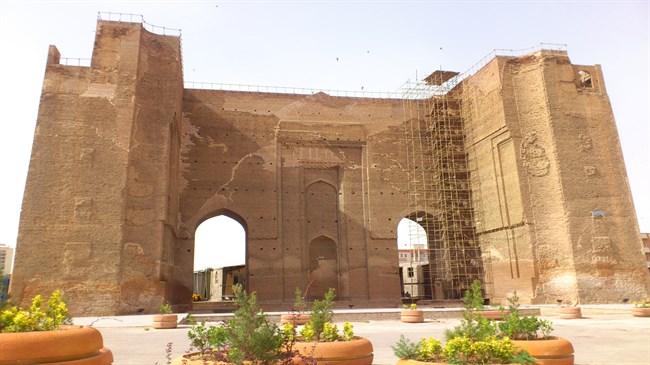
Arg of Tabriz also known as Arg-e Alishah, is the remnants of a big fortification and city wall in downtown Tabriz. Ark’s structure is visible from far distances in downtown of Tabriz, if not blocked by newly high raised building.
The structure was initially raised as a mausoleum in 14th century during the Ilkhanate era. However, with the sudden death of the governor of the city and with some construction complications in constructing a roofed building without pillar for such a huge complex, the mausoleum structure remained incomplete. In the 19th century with the rise of tensions between Iran and Russia the structure rapidly turned into the city’s fort and additional military installations such as a barracks and cannon foundry were added to the original structure. During the twentieth century the military installations were removed from original construction and the surrounding of the ark turned into a park. In the late twentieth century a big mosque was built next to the citadel.
The original construction was made between 1318 and 1339, during the Ilkhanate. During the construction, the roof of the mausoleum collapsed and the construction was stopped afterward. Centuries later, between the eruption of the Russo-Persian War, 1804-1813, and the Russo-Persian War (1826-1828), the compound was quickly reconstructed as a military compound. During the reconstruction of the Arg compound, a foundry factory for the manufacturing of cannons for the Iranian Army was built as well as a military headquarters, a barrack for the troops, and a small palace. Samson Khan a Qajar Iranian general of Russian origin, lived inside the citadel for years together with his wife, the daughter of Prince Alexandra of Georgia.
The Amir Nezām House or The Qajar Museum of Tabriz, is a historical building in the Sheshghelan district one of the oldest quarters of the city of Tabriz, Iran. The base of the edifice covers an area of 1200 square metres. This monument which since 2006 houses a museum dedicated to the Qajar dynasty (1781-1925), was built in the period of the Crown Prince Abbas Mirza (1789-1833). It was renovated by Hasan-Ali Khan, in his position as the Major-domo of Azarbaijan, and used as his residency. In the subsequent periods, the house was employed as the official residence of the provincial governors of Azarbaijan. Because of persistent neglect over a long period of time, this building had come to be in such a bad state of disrepair that for a time it was seriously considered to demolish it and build a school in its place. It has been subject (1993-2006) of an extensive renovation process and since the completion of this undertaking it has been granted the National Heritage status.
The Sheshghelan district has been Governor’s seat during the Ilkhanate dynasty. Hasan-Ali Khan, Amir Nezām Garousi, was born in 1820 in Bijar, in the Kurdistan Province. For a period of twenty-two years he served in various governmental positions. In particular, for a period he was in charge of the Iranian students sent to Europe by the government of Iran. He also served as the General of the Garrus Army and Head of the Security Guards of the High Court and of Arg-e Tabriz. He is buried in Mahan, in the Kerman Province. He is best remembered for his exemplary prose in the Persian language.

The Constitution House of Tabriz, also known as Khaneh Mashrouteh, is a historical edifice located next to the Great Bazaar of Tabriz, Iran. During the years which led to Constitutional Revolution and afterwards the house was used as a gathering place of the leaders, activists and sympathizers of the movement. Among them, the most famous people were Sattar khan, Bagher Khan, Seqat-ol-Eslam Tabrizi and Haji Mirza Aqa Farshi and the founder Haji Mehdi Kuzeh kanaani, himself a revolutionary activist and a well-reputed person of the time; who was named Abolmele, i.e. the father of the nation at the time. The two-story building was constructed in 1868 by Haj Vali Me’mar-e Tabrizi. It has numerous rooms and halls. The most beautiful part of the house is a skylight and corridor decorated with colorful glass and mirrors.
The house was constructed by order of Haj Mehdi Koozekonani in 1868. It includes a two-floor building with internal and external areas featuring Qajar period architecture. Haj Mehdi Koozekonani was a merchant in the Bazaar of Tabriz. With initiating of Constitution revolution and rising up in Tabriz city, Haj Mehdi joined the revolution and became one of the major financier of the revolution. At the same time he used the house as a place for meeting of the revolution heads, and a place for publication of underground paper of the constitution movement. The house became important in the history once again just after World War II, when it was used a place for Azerbaijan’s Democrat Party meeting center (1946–1947). In 1975 the house is registered by Cultural Heritage of Iran.
Azerbaijan Museum is the major archaeological and historical museum in Tabriz, in the northwest part of Iran. It was established on April 1958. The museum consists of three major halls, a side yard, office rooms and a library. It mostly contains objects discovered from excavations in Iranian Azerbaijan, also some artworks and sculptures of artists. Its library contains more than 2500 books, both handwritten and printed, about history, archaeology, art and Iranian culture. Apart from National Museum of Iran in Tehran, Azerbaijan Museum has the largest collection belonging to different periods of Iran’s history.
The museum has three galleries. The first gallery bears the oldest remains from 5th millennium BC until Sassanian dynasty (212-656 AD). The museum’s monuments include goddesses, two skeletons (male and female) and a carved slab of marble known as Bism Allah-Stone. The second gallery consists of two parts: one for Islamic archeology and another part for coins and seals. Part one involves pottery dated from the 10th to the 19th centuries. The coins of this gallery, began with the Achamenid dynasty and end in the Qajar dynasty. The displayed seals and stamps date from the third millennium BC to Islamic eras.
The third gallery includes some sculptures made by Ahad Hosseini. They are made of plaster and represent the sculptor’s own image about the fate of mankind in the 20th century.
In the yard of museum some stone figurines, statues, rams and inscriptions are kept.




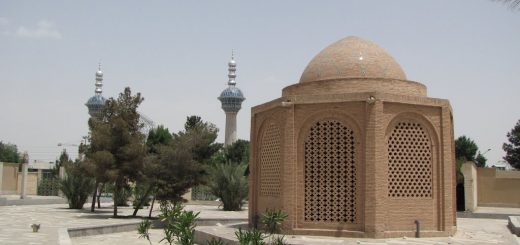


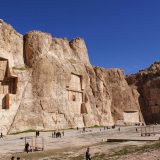
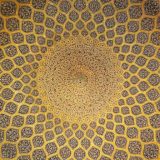
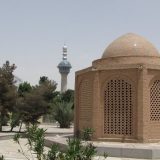
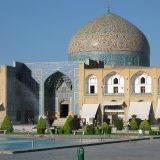

Took me time to read all the comments, but I definitely enjoyed the write-up. It proved to be Quite helpful to me and Im positive to all the commenters here Its always good when you can not only be informed, but also entertained Im positive you had fun writing this article.
You have actually created some exceptional points here. I specifically appreciate the way you’ve been able to stick so much thought into a relatively short post (comparitively) which creates it an thoughtful publish on your subject. In my opinion, you’ve presented the topic in a quite thorough yet concise manner, that is genuinely useful when somebody wants to get the facts without spending too a lot time searching the web and sifting out the noise to discover the answers to their questions. I usually get so frustrated with so plentiful in the final results inside the major SE’s due to the fact they normally seem to mostly be filled with filler content that often isn’t extremely sensible. If you don’t mind I’m going to add this post and your webpage to my delicious favorites so I can share it with my family. I appear forward to approaching back to read your future posts as well.
I cannot say enough good things about this article. The author’s writing is both informative and engaging, and their commitment to presenting factual and balanced perspectives is truly admirable. What I appreciate most about this article is its ability to tackle complex issues and present them in a way that is accessible and engaging for readers of all levels. Whether you’re looking to learn something new or simply looking for an interesting read, this article has something for everyone. Overall, this article is a testament to the power of quality journalism to inform and educate readers on important issues.